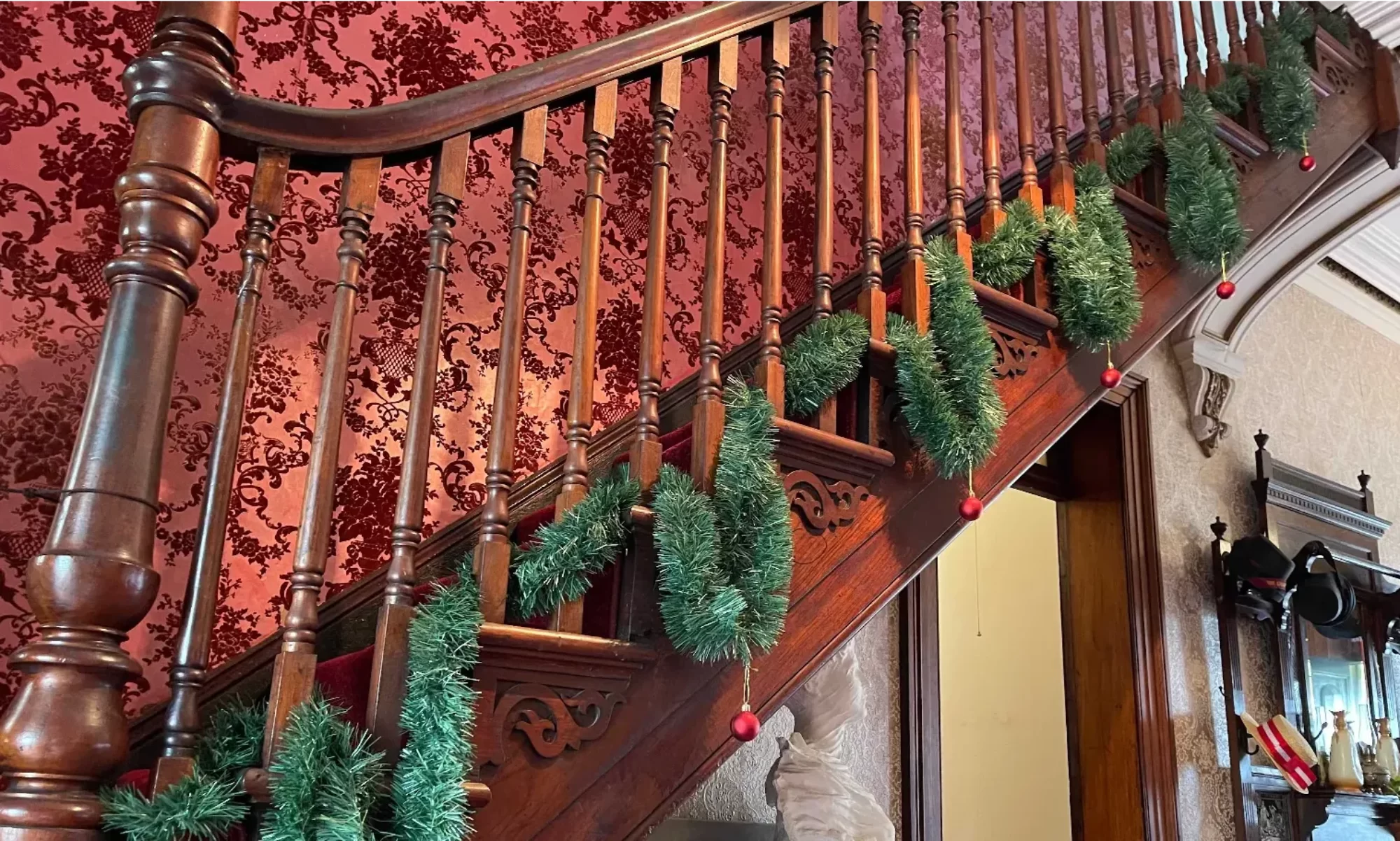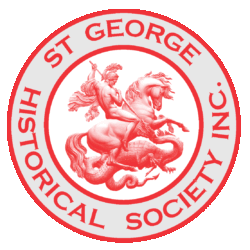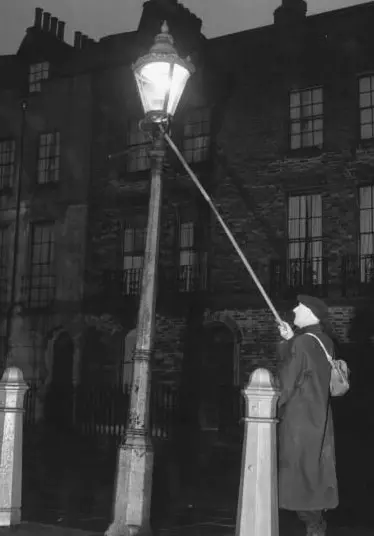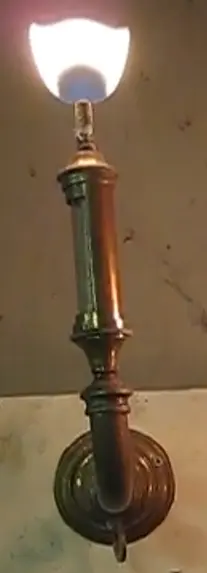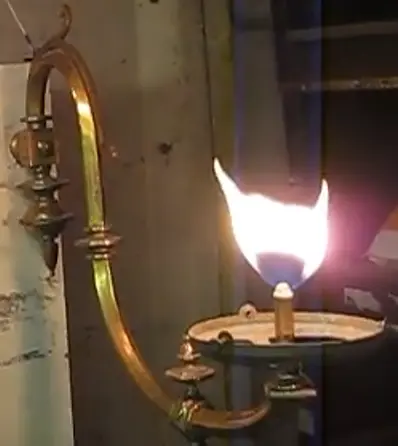by Arthur and Florence Day
When the Bexley Ward of Hurstville Municipality became the Borough of Bexley it had 75 gas street lamps. The Australian Gaslight Company charged £4 per annum each for their maintenance. However, gas was not reticulated throughout the entire borough and, where it was not available, any lighting required had to be by kerosene lamps.
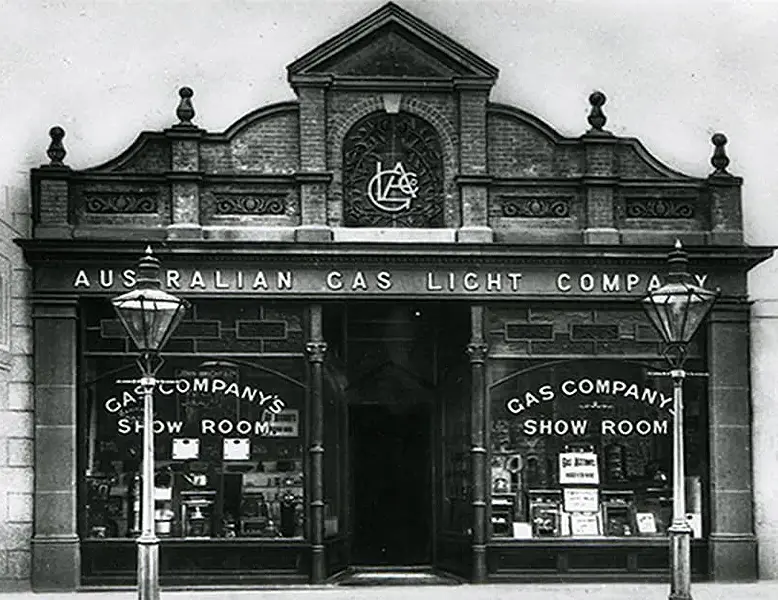
Gas lamps were lit and extinguished by a gas company lamplighter who rode a bicycle and carried a stick with a hook on its end. With this he was able to pull on one or other of the rings attached to the gas cock, the pilot light being continuously burning. For a few days around full moon the lamps would not be lit. Later, the operation was performed by a clockwork mechanism which required periodical winding.
The kerosene lamps were lit by a council employee who sometimes had other duties in addition. As late as 1924 the impounding officer is recorded as having the duty of lighting and extinguishing oil lamps and maintaining the oil supply and the wicks all for 25 shillings per week. This arrangement was evidently not satisfactory for the council received many complaints and the lamplighter was threatened with dismissal if there were no improvement within a week. A few months later a new appointment was made of a “Lighter of Oil Lamps” at a wage of shillings per week. It was stipulated that he must attend to the lamps personally.
Fortunately, Bexley started its gas street lighting with incandescent mantles. In 1902 Carlton Railway Station, which was on the boundary of the borough, was still lit by the flames of fish-tail (or batswing) burners. Council asked the railway commissioners if this could be changed to incandescent lighting.
In order that more gas lamps might be installed, a special lighting rate of five pence in the £1 was levied in 1904. Also, a charge was made on the gas company for gas mains laid in the streets. No record is available of early years, but in 1921 this charge for gas mains had reached £241 for the year.
In the early days, shortage of council funds was a frequent occurrence. Thus, in 1905, Rockdale Council told Bexley Council that it could not afford to pay for installation of a gas lamp in Harrow Road at Beaconsfield Street. Bexley had asked Rockdale for this lamp because it claimed to be already doing more than its share of Harrow Road lighting. Maintenance of this lighting was supposed to be shared equally by the two authorities, as the boundary ran down the centre of the road. January 1910 found Bexley so short of funds that it had to defer payment of the gas account. After the general strike of 1917, the gas company was asked by Bexley Council for a rebate of payment to allow for lamps not lit during the strike. It is not recorded whether any allowance was made.
Street name slips were an attractive feature of gas street lighting. This idea originated in 1904, when the gas company supplied and erected them at a cost of nine pence per slip. Many years later, when lighting was changed to electric, the loss of these name slips was recorded as a minor disadvantage.
Considering the easy accessibility of the gas street lamp, it is surprising that interference by vandals was not common. No cases of practical jokers interchanging name slips were recorded, but the police had to be informed of damage to lamps on several occasions.
The location of gas lamps was not always satisfactory and requests were often made for improvement. The lamp at the eastern corner of Harrow Road and Gladstone Street, while making an attractive night scene against the adjoining camphor laurel, cast a shadow up the Gladstone Street eastern footpath. In those days this sort of thing was accepted as safe and no change was ever made. The Methodist Church in the next block on the same side of Gladstone Street in 1905, asked for a lamp outside the church. It was thought to improve the lighting of street intersections on the wide Dunmore and Queen Victoria Streets by moving the lamps to the centre of the road. On cloudy, but otherwise full moon, nights when the lights would not be lit, the horse-drawn vehicles of those days, with little lighting of their own, occasionally collided with the lamp standards in their new positions. Though it was claimed that the council would not be liable for damages in such cases, the lamps were later moved back to the footpath for greater safety.
The period 1905 to the start of the First World War was one of occasional complaint, if not of the quality of lighting (frequently caused by low gas pressure), then of lamp locations. As early as 1906 a municipal gas works was suggested for the St George district, but nothing came of the idea.
In March 1913, a gas strike occurred and extra kerosene lamps had to be obtained for lighting some very dark, but important, locations in the Bexley area.
The first mention of electricity for street lighting appears to have been early in 1908, when Botany Council suggested that the Tramway Department make a supply available. Nothing resulted from this idea and it was not until seven years later (February 1915) that the next move was made. The Sydney Municipal Council (now known as the Council of the City of Sydney), which then had an electricity department with reticulation into neighbouring suburbs, was asked what the cost of lighting Bexley streets would be. The reply was evidently favourable, for a motion was passed by Bexley Council that the City Council be asked to extend its cables to Illawarra suburbs, but this was never done.
The first public use of electric lighting in Bexley Municipality was in July 1918 when, with council permission, the Carlton and West Kogarah Voluntary Workers Association erected poles in Short Street, Carlton, to carry electric lighting wires from Mrs. Rates’ factory to the entrance of Carlton Station. The factory had an electricity generator and advantage was taken of this to arrange the lighting at the station for wartime patriotic purposes.
It was not until the formation of the St George County Council that electric lighting of Bexley streets began. This was in 1922 and at the same time the special lighting rate of 1904 was abandoned. The gas company agreed to accept 14 days notice for discontinuance of a gas lamp.

As electricity became available only gradually to the more settled parts of Bexley, gas lamps were still being asked for in the more remote parts. Where there was no gas main a kerosene lamp had to be used. This occurred as late as 1924. Delays to the completion of the scheme of electrification were frequently caused by the non-arrival of transformers. Thus, in June 1923 it was stated that the supply would not be available north of Stoney Creek Road for at least six months.

As was the case with gas-lamps many years before, special requests were received for lamps in certain places. The police department, no doubt with some justification, asked for an electric light outside the Bexley Police Station, then existing at 3 Oriental Street.
At first, electric lamp sizes were 60-watt for side streets and 100-watt (with a few 200-watt) in busier locations. At the end of 1923 there were 79 gas lamps, 182 60-watt, 3 100-watt and 13 200-watt electric lamps in the streets of the municipality; the number of oil lamps still existing at that date is not known, but there were some. The cost of erecting a 60-watt or 100-watt lamp on an existing pole was stated to be £11.20 in 1936.
In spite of the change over to electric street lighting, complaints were sometimes received of insufficient light. Poor lighting was said to have led to a horse being killed by a car in Croydon Road in 1936.
During the 1930s a change to mercury vapour lamps for main roads was started. But, by 1940, with the Second World War increasing in intensity, materials became difficult to get and the work had to be stopped.
Up to August 1938 the arterial lighting of Forest Road was switched off at midnight, then changed to all-night lighting.
“White Way” lighting should be considered as a contribution to street lighting. Confined as it usually was to shopping areas, it originated in the days of late shopping nights. In Bexley, the chamber of commerce erected “white way” lighting at its own expense about 1924. This gave an attractive addition to the footpath illumination in the main shopping centre and was very popular. Bexley Council is recorded as having congratulated the chamber of commerce on its work. However, soon afterwards (1925) the latter asked the council to take over maintenance, if possible, on 1 January 1926. Many months were to elapse before this eventuated.
Unfortunately, the construction used for the Bexley “White Way” was vulnerable to damage by high vehicles, and it seems, did not stand up to weather conditions as well as might be expected. So after nine years service (October 1933), the St George County Council reported that the wiring was in a dangerous condition and urgently needed reconstruction. Certain sections had had to be disconnected, so the St George County Council was asked to advise on a course of action. The chamber of commerce offered to pay one-third of the cost of reconstruction, the Bexley Council to bear the remainder. A tender was let and the new “White Way” was switched on in May 1934. Five years later, as an economy measure at the start of World War II the individual shopkeepers were given permission to clean the lamps in front of their premises. The “White Way” fell into disuse during the war because of government restrictions, but early in 1946 it was possible to go into the question of its second reconstruction. The chamber of commerce made a contribution of £25, but on this occasion recommended only the section between Dunmore Street and Bayview Street for attention, as the shopkeepers towards Westminster Street were reported to be uncooperative. When the work was completed the shopkeepers on the south-east side of Forest Road, from the Commonwealth Bank to near the post office complained that no “White Way” had been erected outside their premises. It was explained that their premises were erected after the construction of the “White Way” and that, in any case their exterior lighting was similar to that of the “White Way”. The chief difference was that they paid for the electricity through their own meters. Had it been necessary to continue the “White Way” in uniform fashion right to Harrow Road the existing circuit would have been overloaded and another would have been needed to cope with the load. This extra expense was not thought to be warranted.
Maintenance of the equipment, including time switch, but excluding the cost of electricity and lamp and shade replacements was said to have cost approximately 10 shillings per week.
In July 1947, a deputation from Carlton (west side) asked council to provide, among other things, a “White Way” for their shopping centre.
The life of Bexley as a separate municipality was now nearing its end and the coming of more intense street lighting in the form of fluorescent and, later, mercury fluorescent lamps caused the abandonment of “White Ways” of filament lamps.
This article was first published in the February 1972 edition of our magazine.
Browse the magazine archive.
Unless noted, images courtesy of the Bayside Library Service Local History Collection.
